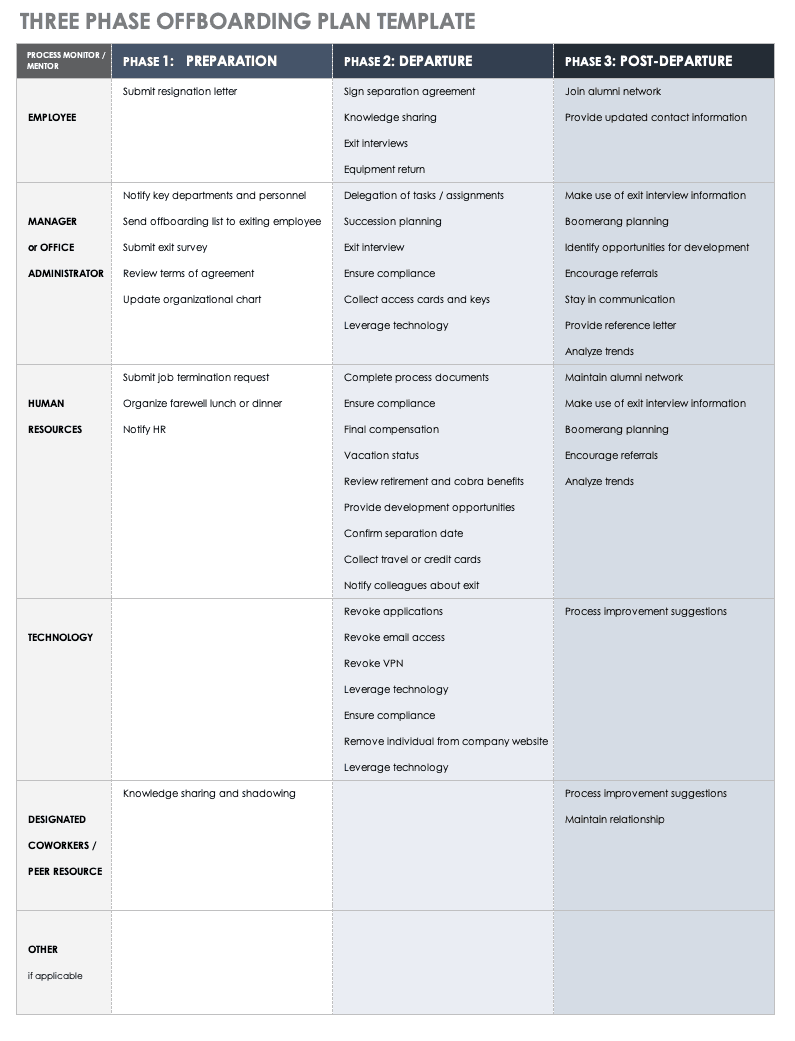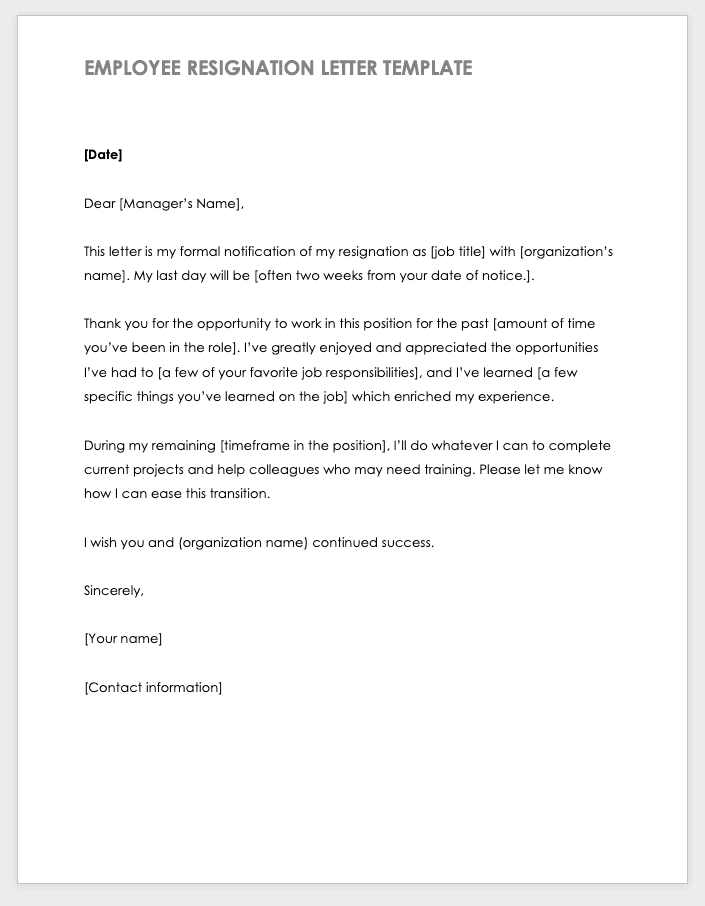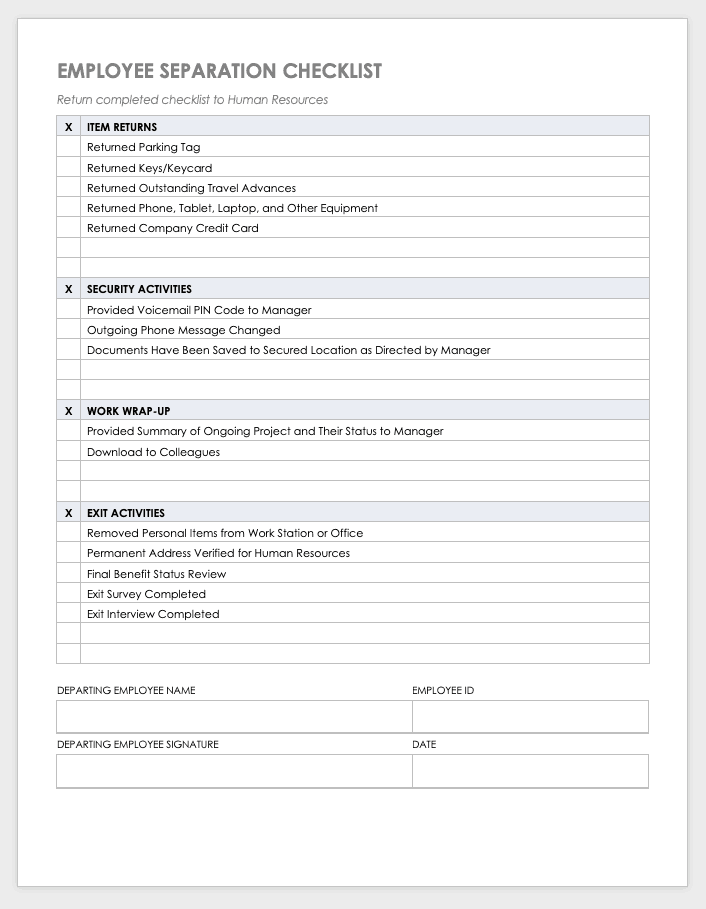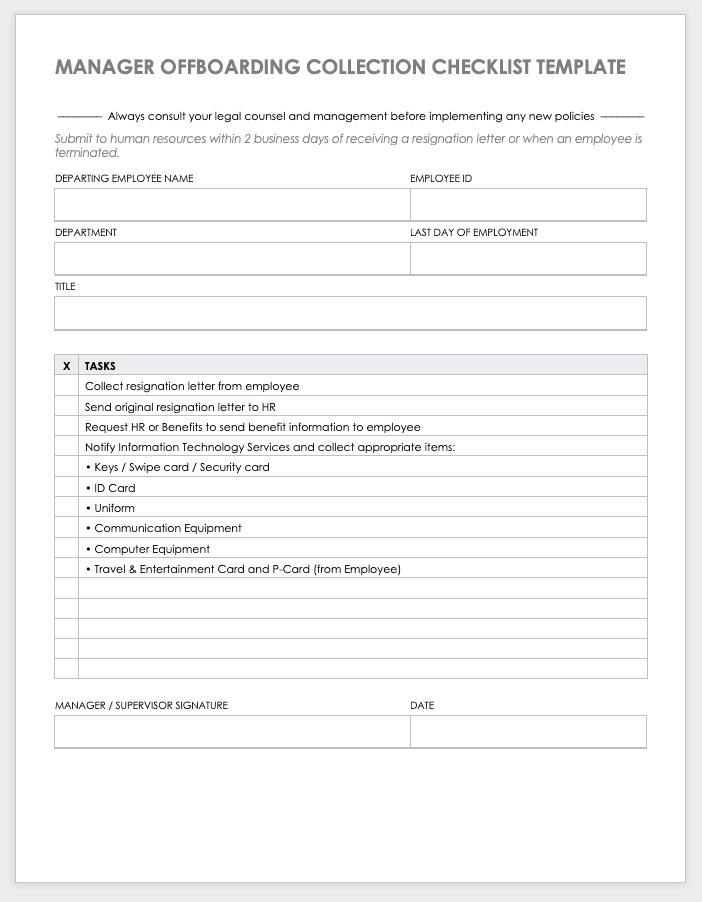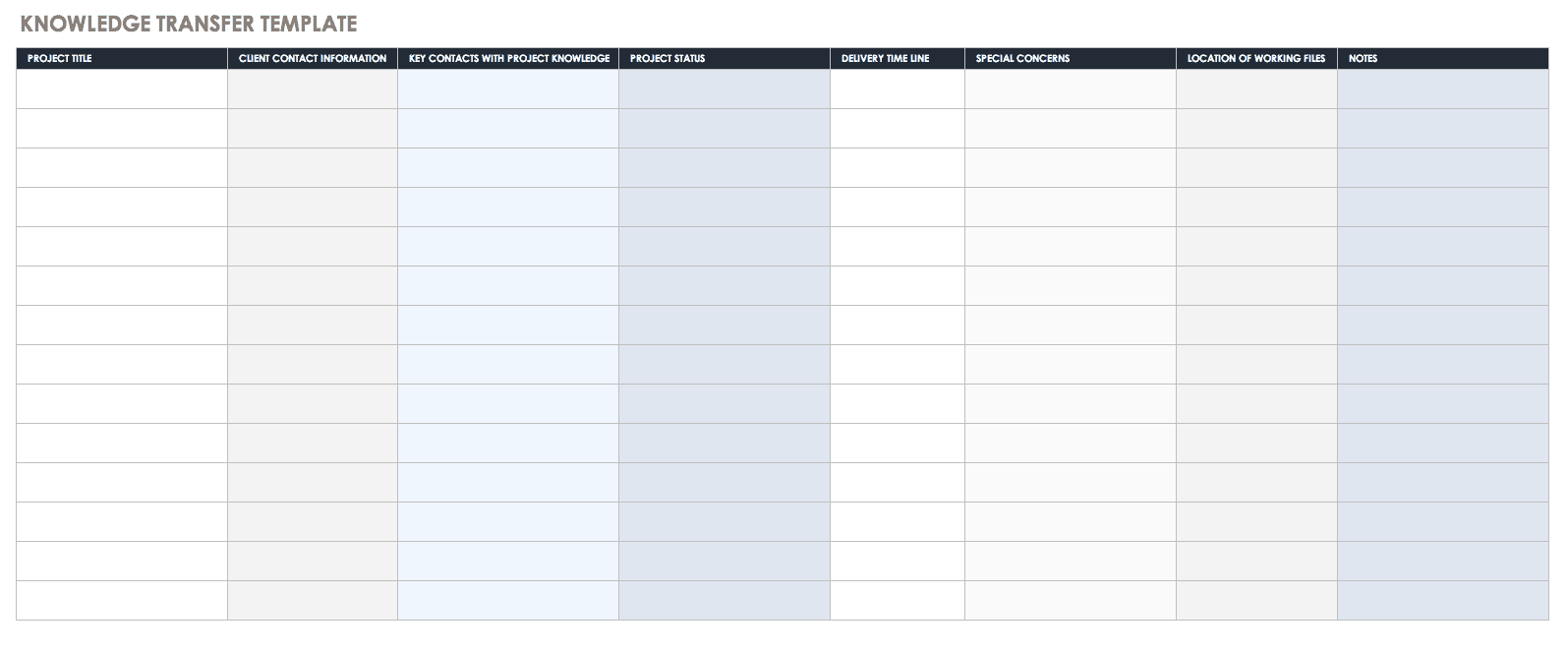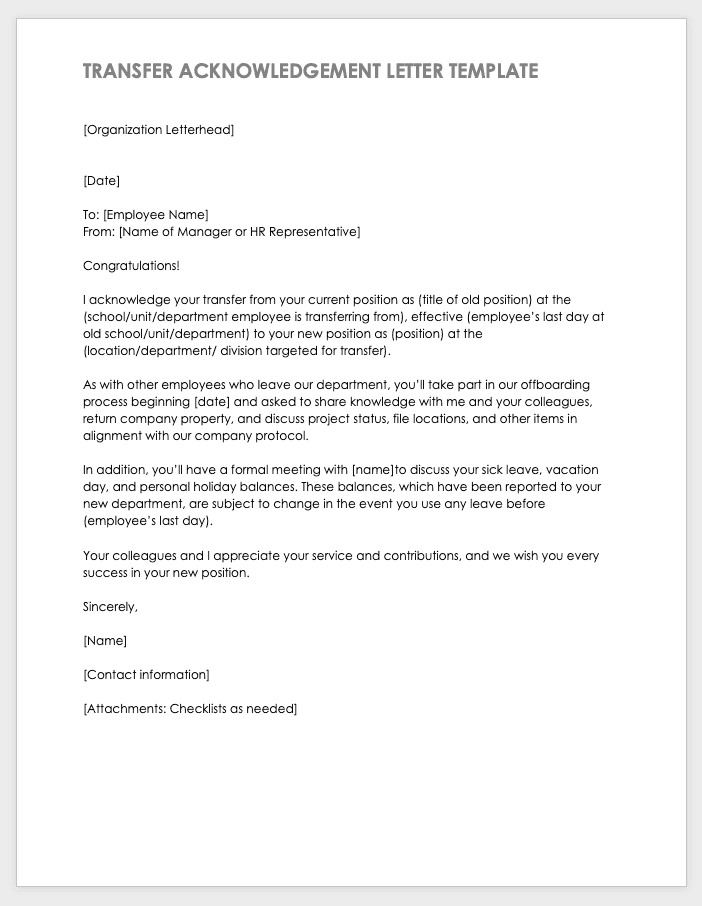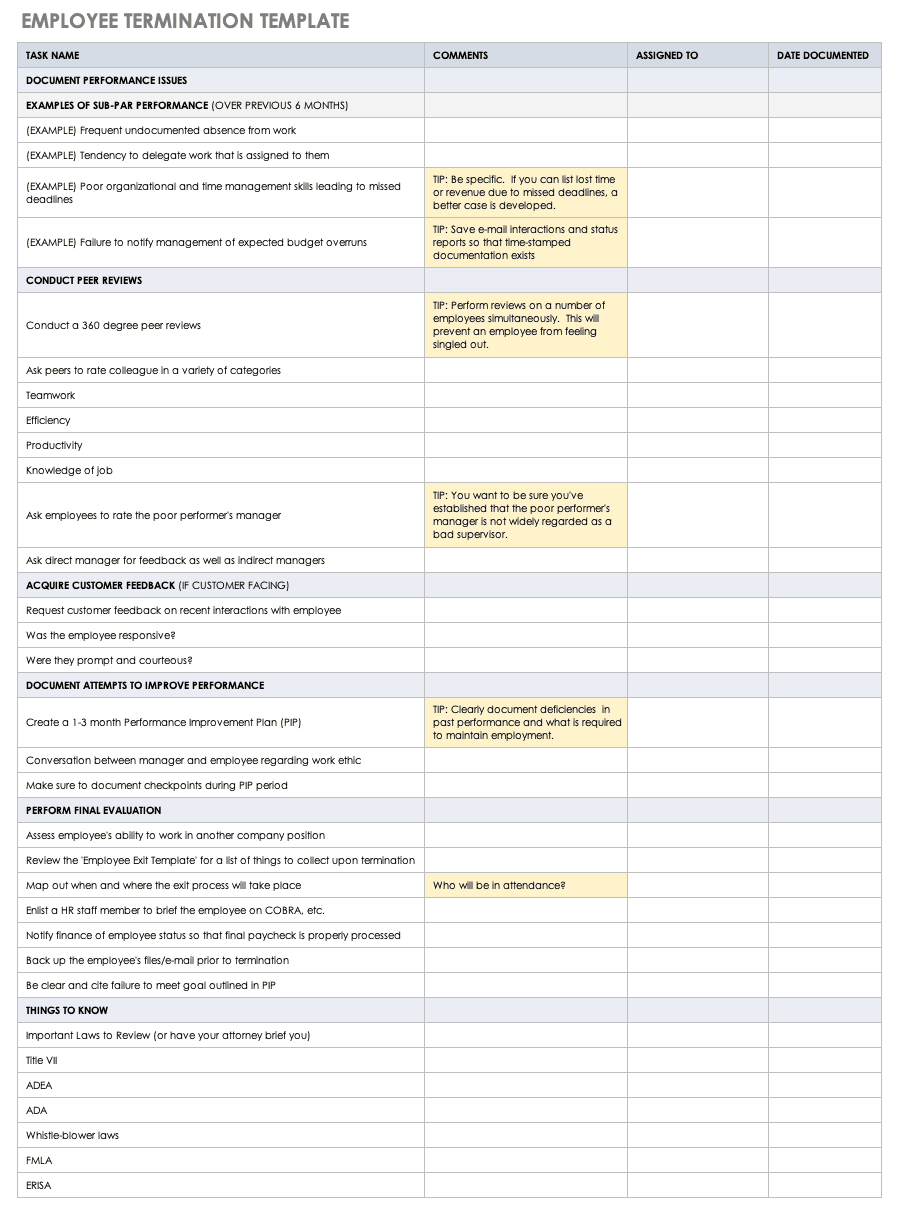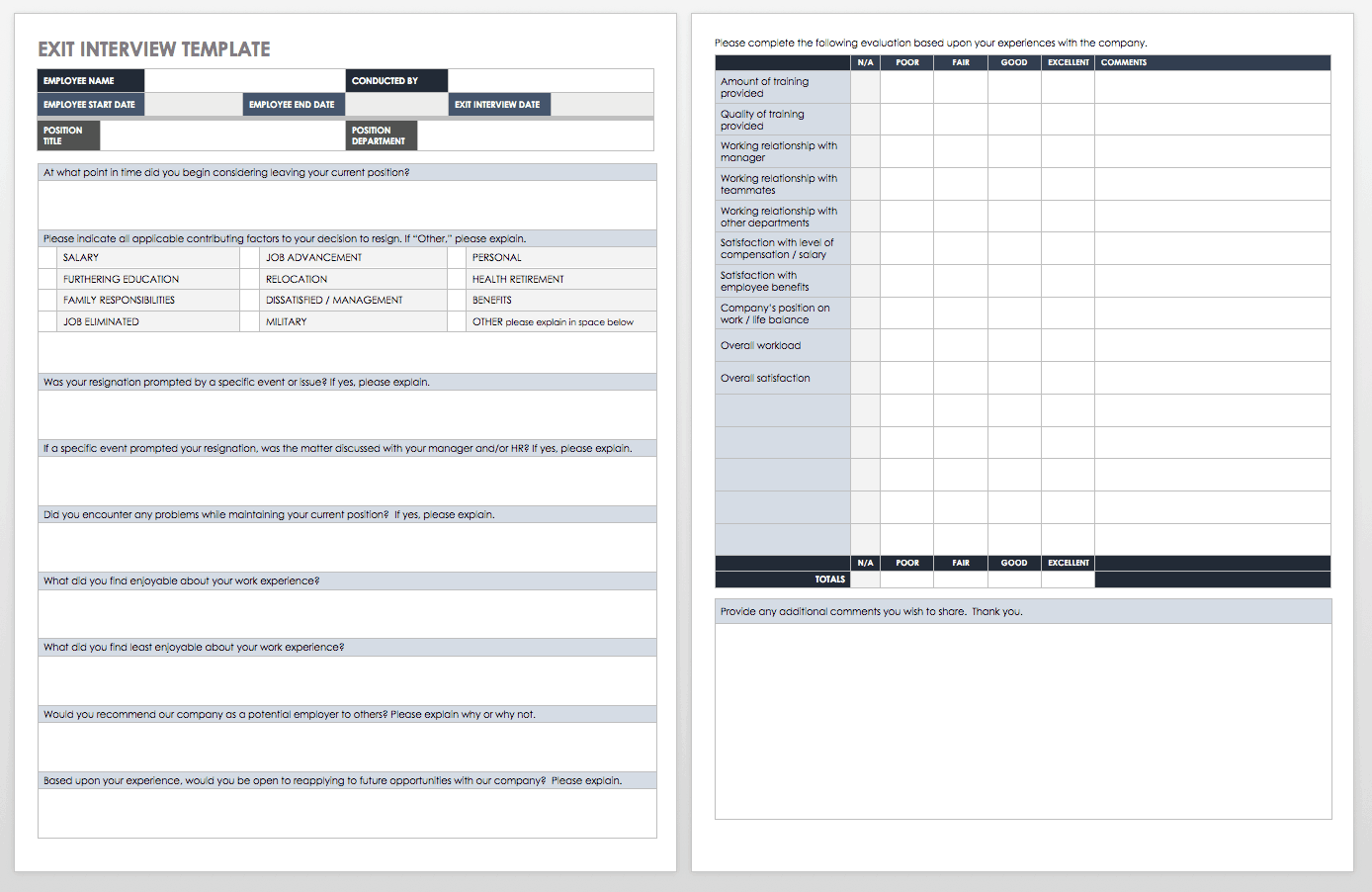HR Experts Share Best Practices for Offboarding and ‘Boomerang’ Employees
Dr. Gia Suggs, human resources consultant and author of Onboarding, Maximizing the Success of New Employees, says, “Offboarding is the process that helps ensure that you complete the departure process efficiently, effectively, and with minimal disruption to workflow.”
A powerful way for companies to succeed, offboarding helps you do the following:
- Transfer knowledge. Employees in transition have an organized way to share their knowledge, skills, and behaviors with the employees who replace them, as well as with management.
- Control all exits. Ex-employees know a lot about your organization, and it’s likely that they're headed to positions with competitors or past, present, or future customers. Former employees are also probably sharing their opinions on social media and company rating sites. Their final impression of your company should be a good one.
- Lower employee turnover. The infographic in “The Complete Guide to Employee Onboarding from HR Experts” shows why more people in more industries than ever before are leaving their jobs for new opportunities to make more money, speed career progress, or learn more skills. The exits that result from the pursuit of those opportunities can benefit those who stay. However, replacing those who leave costs companies time and money. Make sure to stay competitive.
- Reduce risk. Support continuous improvement. Murriner also advocates for this management tool, noting, “A well-designed offboarding process ensures the kind of truthful and honest feedback from employees that can be most useful for improvement measures.”
- Leverage social networking. In the age of social media, many company recruiters find it easier to tap into their former employee pool for recruitment potential than to start from scratch.
Offboarding puts the organization in control of the relationship and manages the exiting process at every stage with every type of employee.
Project Management Guide
Your one-stop shop for everything project management

Ready to get more out of your project management efforts? Visit our comprehensive project management guide for tips, best practices, and free resources to manage your work more effectively.
The Boomerang Phenomenon: Benefits and Strategies from the Experts
Dr. Talya Bauer is Cameron Professor of Management, Management Area Director at Portland State University and author of Best Practices for Maximizing Offboarding Success. She explains that organizations neglect the end of a staffer’s employment at their peril, mainly because of returning workers, known as boomerang employees: “New estimates indicate that boomerang employees can make up to 20 percent of organizational hires and that the trend is increasing.”
In her research, Bauer found that “[b]oomerang employees can save up to 67 percent of the usual recruitment costs of advertising, screening, and related tasks.” Other benefits include adding back skills to the department and the overall organization, enhancing creativity, reinforcing culture, and recruiting through connections.
Based on Bauer’s findings, here’s a list of “boomeranger” best practices to fold into your offboarding process:
- Leave the door open. Let valued departing employees know that if their new position doesn’t work out, they should consider re-entry if a suitable opening becomes available.
- Provide references. Attesting to excellent job performance leaves a positive impression with exiting employees. Should they not return, they may be a useful resource for talent referrals.
- Stay connected. Professional networking sites and social media make it easy for HR or direct managers to check in with former staff members. You may also want to host a site dedicated to current and alumni employees.
- Stick to your process. When a boomeranger applies for a job or is invited back, go through a complete onboarding process, like the one described in “Employee Onboarding Processes: Plans, Best Practices, and Flowcharts.” Your organization may have changed, or the alumnus/alumna may have forgotten some of your standards and practices.
- Check in with the last employer. Find out why the relationship didn’t work out — there may be more to the story than the boomeranger’s preference for your organization, and you want all the information before you take your “ex” back into the fold.
- Keep team members in the loop. It’s logical that loyal employees may question why you’re rehiring a staffer whose previous exit saddled them with more work. Take time in advance to communicate how rehiring this particular employee is likely to benefit the company — and the current employee’s work life.
Whether the employee is leaving for the first time or is a boomeranger, consistently follow your established offboarding process.
Step-by-Step Offboarding Planner with Checklist and Templates
All of our experts told us that onboarding is a series of events rather than a single moment in time. Offboarding includes many individual steps, but to simplify the course of action, it makes sense to place each step in one of three phases:
- Phase 1: Preparation
- Phase 2: Departure
- Phase 3: Post-departure
Step-by-Step Offboarding
Except for in the smallest companies, multiple team members are involved in the offboarding process. The norm is that the larger the organization, the larger the cadre of staffers you’ll need.
Three-Step Offboarding Process and Easy-to-Use Template
While there are three main steps in the offboarding process, Bauer and Matthies point out that it’s important to customize that process to align with the culture, the company, and the workforce and to accommodate your organization’s definition of success.
Creating a customized offboarding plan is easier if you specify what happens in each of the three main phases and who is responsible. This template provides a good starting point for your design. You can also attach dates and names after you’ve settled on your plan to further streamline how you manage exiting staff members.
Download Three-Step Offboarding Plan Template
Excel | Word | PDF | Smartsheet
More Templates to Support Your Offboarding Process
To ensure that you dot the i's and cross the t's for compliance and other reasons, you usually require documentation. Here are some document templates to use in your offboarding process.
The employee resignation letter template helps an employee compose the required official notification letter.
Download Employee Resignation Letter Template - Word
The employee separation checklist template enumerates items your employee may need to return, complete, or wrap up before taking leave.
Download Employee Separation Checklist Template
The letter of recommendation template helps a supervisor write a positive review of an employee’s work history, including a description of the relationship between the two of them.
Download Letter of Recommendation Template - Word
Your employee can return and sign off for items on the manager offboarding collection checklist.
Download Manager Offboarding Collection Checklist Template
The knowledge transfer template simplifies the process of sharing an employee’s institutional memory by including everything you need to know before the employee exits.
Download Knowledge Transfer Template - Excel
The transfer acknowledgement letter template effectively communicates to other company units when team members change departments, divisions, or locations within the same organization.
Download Transfer Acknowledgement Letter Template - Word
The employee termination template provides documentation regarding the decision to let an employee go. This template furnishes a crucial aid in compliance.
Download Employee Termination Template
The exit interview template supports data gathering to further the goal of continuous improvement at your organization.
Download Exit Interview Template
Offboarding Software to Smooth Employee Transitions
“Software applications make sense for onboarding and offboarding,” stresses consultant Suggs. “Applications can support user privileges/network access, required legal and policy-related documents, benefits, including COBRA, and any internal or external communication.”
Bauer agrees: “The bigger the enterprise, the more critical it is to use technology to capture data and maximize success.” A proponent of exit surveys, Bauer thinks that webforms are an excellent way to collect and learn from such data.
If you’re looking for a software application to help with offboarding and other HR functions, review “Human Resource Management 101: Functions, Policies, and Procedures.”
Employee Offboarding FAQ
Here are some offboarding basics, including expert insights to help you understand the process and benefits of (as well as obstacles to) selling the concept to ensure buy-in throughout your organization.
What Is Employee Offboarding?
Aspen Edge’s Matthies has a simple definition of employee offboarding: “It’s the process used to end an employee’s employment with the organization. Offboarding covers the interaction and the exchange of information between the departing employee and the organization to ensure a smooth transition.”
Matthies stresses two points:
- Offboarding is a separation process that runs best when supported by appropriate software.
- Offboarding that’s consciously designed ensures consistency and reduces potential risks to organizations and the individuals within them, no matter who is leaving a company.
What Is the Connection Between Onboarding and Offboarding?
Bauer suggests that you think of offboarding as the final segment of the employee lifecycle that begins with onboarding, the process of integrating new employees into an organization. The idea is to take advantage of knowledge transfer during the offboarding process, That way, you can improve the onboarding experience of future employees and strengthen the company’s competitive standing, while also addressing basic tasks like mandatory paperwork.
If you’re new to onboarding strategies and tactics, check out “Onboarding: What Managers Need to Know.”
What Types of Employees Are Offboarded?
An offboarded employee is anyone who has worked for your company, then departs through internal transfer, resignation, layoff, termination, or retirement.
Full-time, part-time, and contract employees may transition for any of the following reasons:
- Internal Transfer: “An angle that you may not consider when you’re putting together offboarding plans,” says Murriner, “are people who are moving within the organization. The same processes should apply to their departure as to a departure from the company altogether. In either case, the employee should be sharing project status and transferring knowledge.”
- Resignation: As more employees feel confident in a favorable job market, employers have to expect some turnover. A 2018 survey from Robert Half International found that 64 percent of all workers and 75 percent of workers under the age of 34 think switching jobs is right for them and their careers.
- Termination or Layoff: This refers to employees whose work with a company ends because of performance, ethical infractions, or other factors or because the company’s finances require staff reduction.
- Retirement: People who end their full-time working life are a goldmine of knowledge. You need to debrief them and have them mentor their colleagues before they leave. In the future, they may also serve as consultants or part-time employees, so it’s best that they depart on good terms.
What Are the Human Challenges in Employee Offboarding?
Offboarding is a sensible addition to the skill set of supervisors, managers, and human resources, but the process may not always be easy to implement — mostly because change is difficult for people.
Here are some of the human-based challenges of employee offboarding:
- Underrated Knowledge Gathering: It’s essential to understand both what’s gone wrong and what’s gone right in order to make positive changes that will help you retain current employees.
- Continuous Improvement: One way to slow down expensive attrition is to upgrade procedures and standards. A 2017 Gallup poll of over 7,000 adults found that more than 50 percent of employees at some point in their career had left a job to get away from their manager. When armed with the right information, you can prevent these kinds of turnovers by making the appropriate changes.
- Prevention of Productivity Drops: A formal offboarding programming keeps work from coming to a standstill. When exiting employees follow an effective process concerning knowledge sharing and project handoffs, an organization can continue to run smoothly.
- Angry Exiting Employees: Human resources authority Suggs notes, “Disgruntled employees are often uncooperative. However, even under these circumstances, in which the social transition steps of knowledge sharing, project handoffs, and documentation are challenging, you should still complete the functional transition steps.”
- Lack of Management Commitment: Murriner finds in his consulting practice that there can be resistance from the top down: “Sometimes it’s difficult to get HR and managers to understand the importance of managing the transition well. Offering resources to managers during this period and building great relationships with managers before separation can improve the chances of success.”
- Overstretched HR Departments: Aspen Edge Consulting’s Matthies says, “HR always has so many hats to wear and is perpetually busy. Streamlining the process and documenting it to make sure it’s the same with each employee will help ensure consistency.”
- Coordination Issues: “Another challenge is getting management and employee commitment to the process, as well as coordination with other departments,” says Matthies. “Top-down buy-in and automation are the key.”
Use the benefits of offboarding as a tactic to overcome resistance with people at every level of your organization. When you have the right attitude and tools, offboarding needn’t be difficult.
Smartsheet Can Make Offboarding—and Every Other HR Process—Easier
Empower your people to go above and beyond with a flexible platform designed to match the needs of your team — and adapt as those needs change.
The Smartsheet platform makes it easy to plan, capture, manage, and report on work from anywhere, helping your team be more effective and get more done. Report on key metrics and get real-time visibility into work as it happens with roll-up reports, dashboards, and automated workflows built to keep your team connected and informed.
When teams have clarity into the work getting done, there’s no telling how much more they can accomplish in the same amount of time. Try Smartsheet for free, today.



